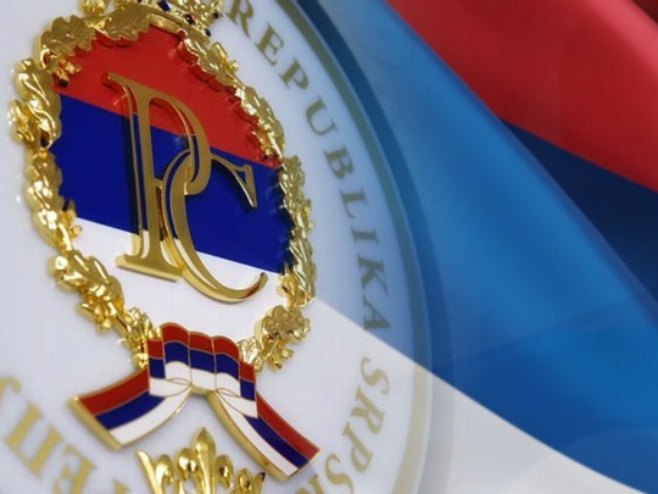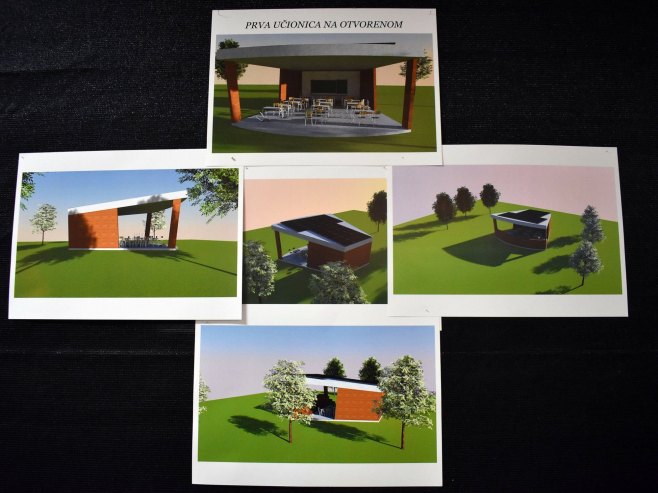In the past, embroidery was much more than simply decorating clothes—it often reflected resourcefulness, patience, and creativity, carefully preserved and passed down through generations.
One woman who has chosen to revive traditional craftsmanship in today’s modern society, dominated by mass production and “fast fashion,” is Borka Vlačić from Lopare. For years, she has been creating folk costumes and handmade crafts.
Borka was born and raised in Lopare, where she grew up watching the women in her family make various handmade items. This sparked her desire to learn the craft herself.
“I grew up surrounded by my mother and grandmother, who did all kinds of handiwork, as well as my neighbors, aunts, and cousins. So, naturally, I wanted to learn as well. I picked up the craft by observing them closely because, back then, few had time to sit down and teach you. But I had the willpower, and I believe it’s a gift from God,” Borka begins her story.
While she makes various types of handmade items, she emphasizes weaving as her primary focus. She found weaving particularly difficult to master because it requires immense concentration and precision. She explains that even a single mistake in one row forces you to start all over again, making the process extremely demanding.
“I focused on weaving above all else. It’s a beautiful craft that was disappearing, and it broke my heart. Seeing weaving fall into oblivion made me determined to revive it. And I think I’ve succeeded. It took me a long time to get a weaving loom, and although I already knew how to do other handicrafts, I didn’t learn weaving until I was in my forties,” Borka explains to eTrafika.
Love is what motivated Borka to learn weaving. She says that, at times, she didn’t even realize how hard it was because her passion and energy kept pushing her forward.
She describes weaving as therapeutic, something that calms her soul and fulfills her emotionally. Despite the complexity of creating folk costumes, the joy and satisfaction she feels when completing a piece outweigh any challenges she faces.
“The time needed to complete a costume depends on its type. First, I have to cut the lace, weave the belt, tailor the fabric, embroider, sew the dress, and crochet decorative cords. I always strive to make everything by hand, avoiding machines, whether for embroidery or cords. Handmade work has a special charm, and I want to preserve that. The whole process usually takes about one to two months, depending on the project,” Borka explains.
However, her skilled hands occasionally face obstacles, especially when it comes to sourcing materials, which can be difficult to find locally.
In many countries, particularly smaller communities, specialized materials for handicrafts—such as fine threads, embroidery floss, or high-quality fabrics—are not readily available. Specialized stores often exist only in larger cities or even abroad.
“When buying materials, I focus on quality—real cotton, real wool. Folk costumes can’t be made without authentic fabrics and threads. While today’s materials may not match the quality of the past, I manage to find suitable options. I prefer working with high-quality materials, even if they’re expensive, to satisfy my clients,” she says.
This dedication to quality and customer satisfaction ensures that Borka always has work. Her clients, ranging from folklore groups to people ordering outfits for christenings and weddings, often return and recommend her to others.
When it comes to profit, Borka is modest. She emphasizes that her work is driven by love, not financial gain.
“You can’t really make a living from this, at least not in areas with a lower standard of living. It could work if taken to a higher level, but here it’s more difficult. Still, I’m happy. I bought my loom, sewing machine, and materials with money earned from this work, and that means a lot. It’s all about expectations—I don’t expect much financially, so I’m content,” she says with a smile.
Borka credits her family, especially her daughter Sanja, for providing constant support. Sanja, who is talented in drawing, often helps by sketching patterns.
“Sanja is very talented at painting, and she helped me a lot when I first started embroidering by drawing patterns. Many people don’t realize how much effort goes into a single embroidered flower. First, you have to prepare the fabric, wash it, carefully draw the design, and only then start embroidering. It takes a lot of effort to complete each piece. I’m not as talented at drawing as she is, so her help has been invaluable,” says Borka proudly.
Even though many people today don’t know how to make woolen socks or folk costumes, Borka has built a reputation in Lopare and beyond by preserving these traditional skills.
Her works are not only functional but also artistic pieces, each telling a story and reflecting her love for old crafts. Whether she’s making bags, costumes, knitted socks, or other handmade items, every creation bears her signature—carefully selected colors, motifs inspired by the past, and modern touches.
“You know how they say it’s hardest to earn recognition in your hometown? Well, I’ve been lucky that people truly appreciate my work. That gives me motivation to keep going. Our municipality may be small and economically limited, but the moral support means the world to me. Participating in fairs has been crucial—nobody knew about me until I started showcasing my work. I have a great relationship with the cultural society ‘Prosvjeta’ from Lopare and the municipality itself. I’ve even had my own exhibitions, proudly representing my region,” says Borka, who received a gold plaque from the Lopare Municipality among many other awards.
Besides her crafting, Borka also participates in folklore performances as part of the veteran group of “Prosvjeta.” She emphasizes the importance of preserving traditions.
“It’s vital that everyone knows something—whether it’s knitting socks, crocheting lace, or dancing a traditional kolo. Not everyone has to make handicrafts, but preserving any part of our cultural heritage is essential. It’s a key part of our identity,” Borka explains.
Looking to the future, Borka hopes to pass on her knowledge and ensure the tradition of handicrafts continues.
“Anyone who wants to learn, I’ll gladly help. Back in the day, it was hard to find someone willing to teach you. Today, we have so many resources online, but I still focus on reviving old patterns. That’s what fulfills me—bringing history back to life through my work,” she concludes.
Although the materials she uses are often expensive and the techniques demand patience and time, Borka has never given up on preserving tradition in her unique way. For her, every stitch and every thread is a tribute to her roots, her grandmother, and the women before her who used these same skills to provide for their loved ones. Through her work, she is not only a bridge between past and present but also an inspiration to those who understand that even small things, like knitted socks or handmade costumes, play a significant role in preserving tradition.
s
s
Source: See Srpska









